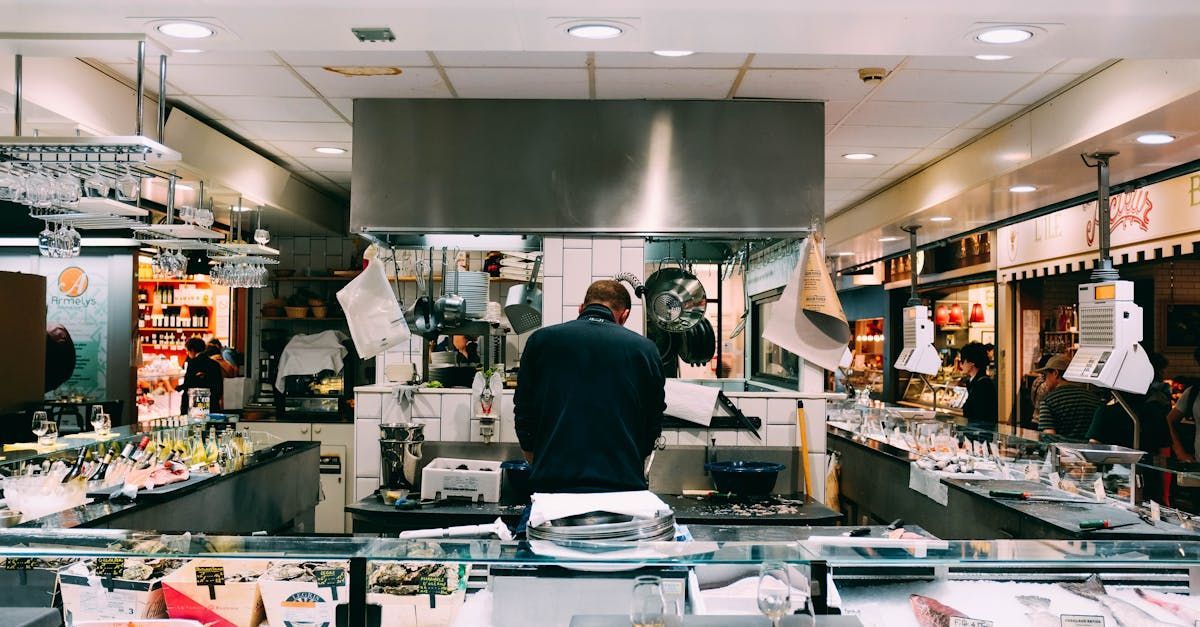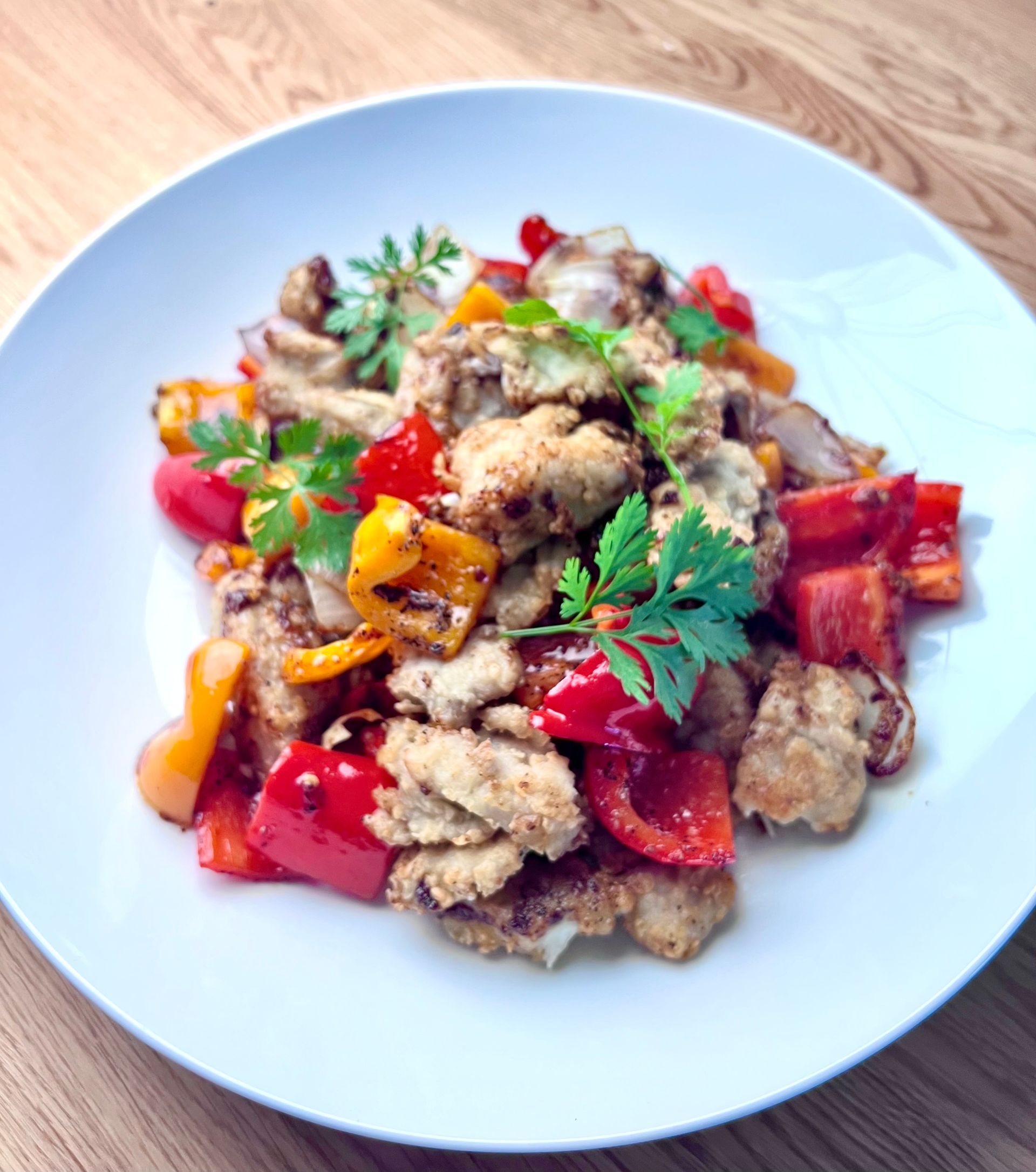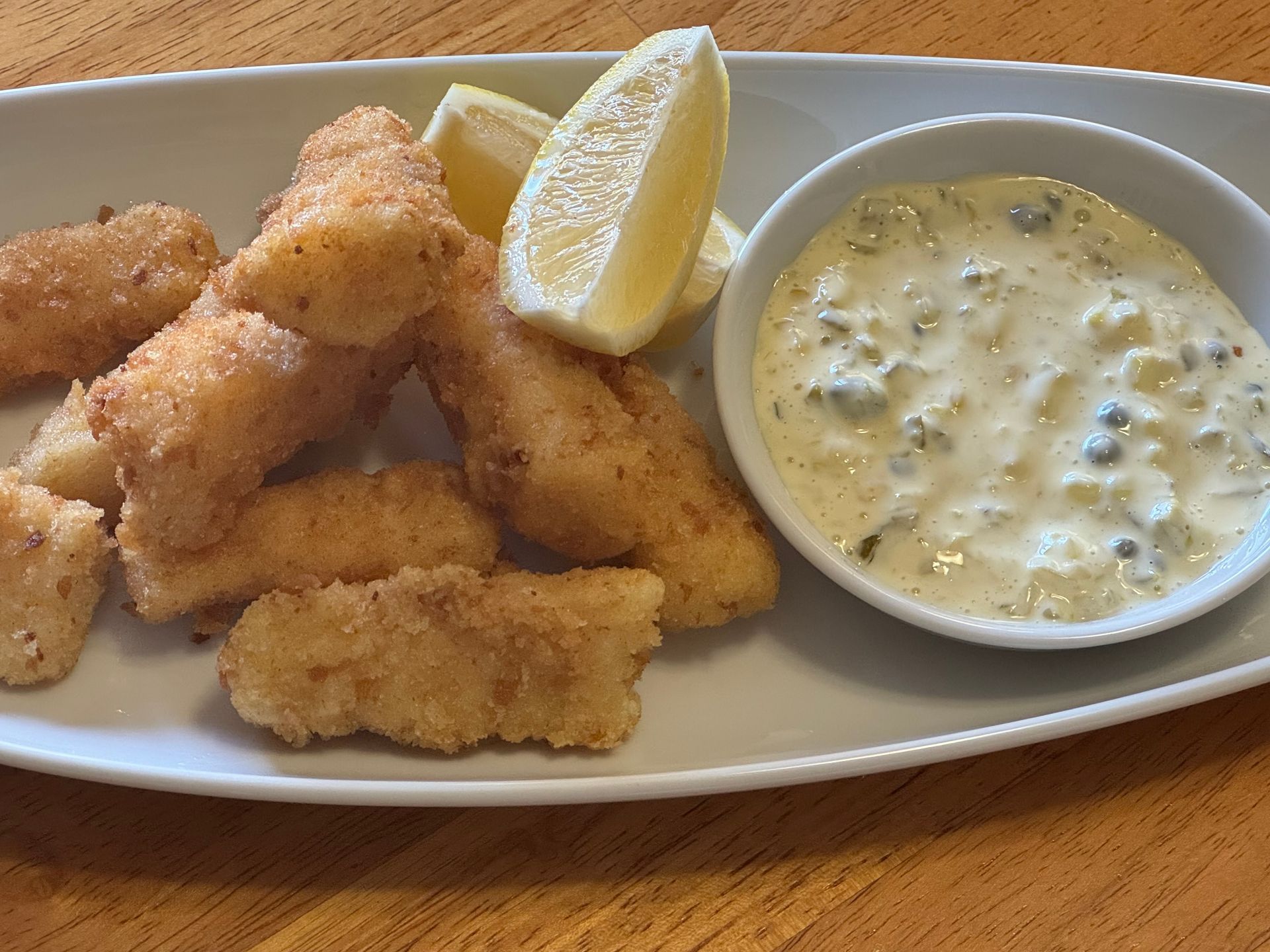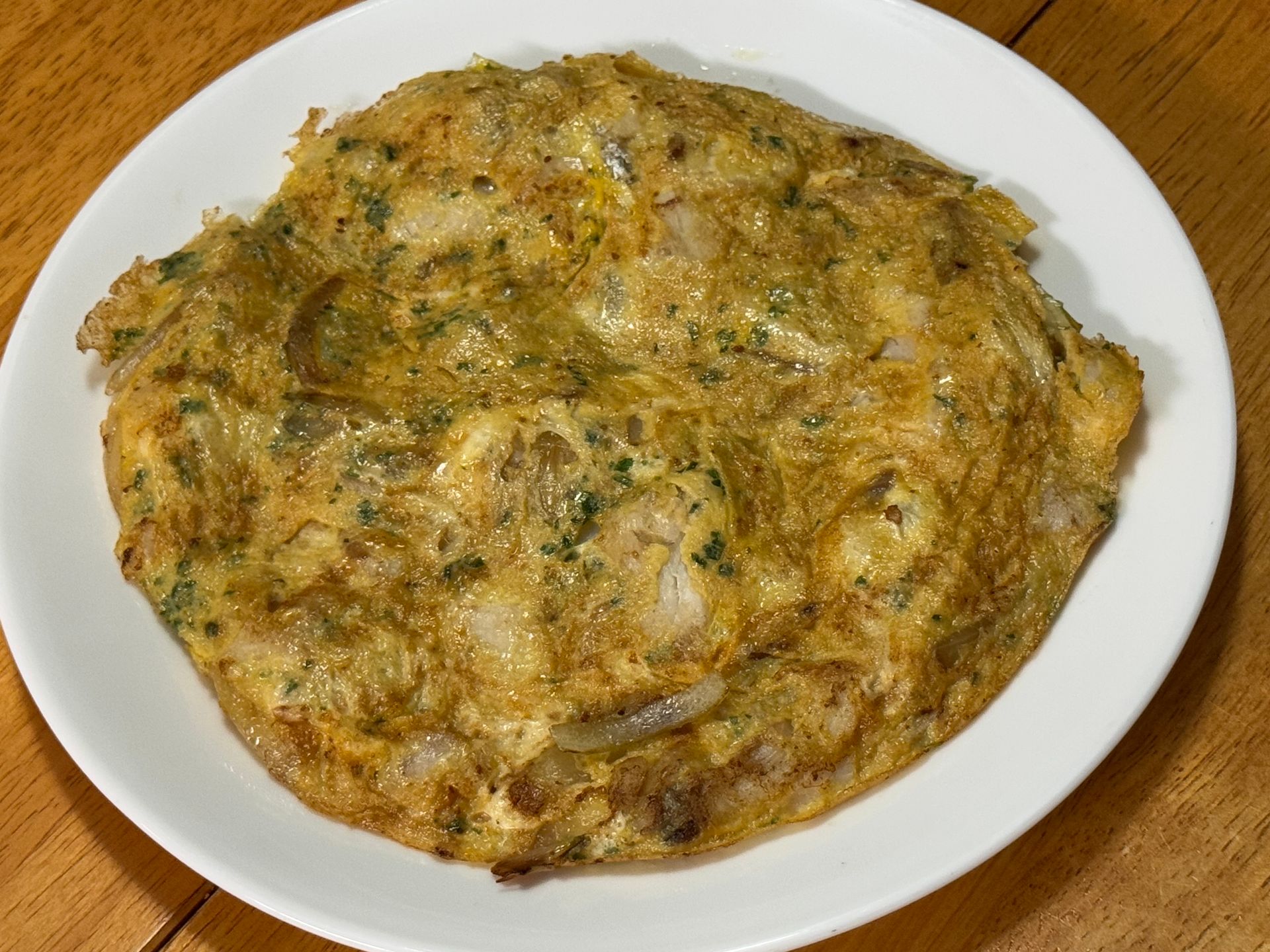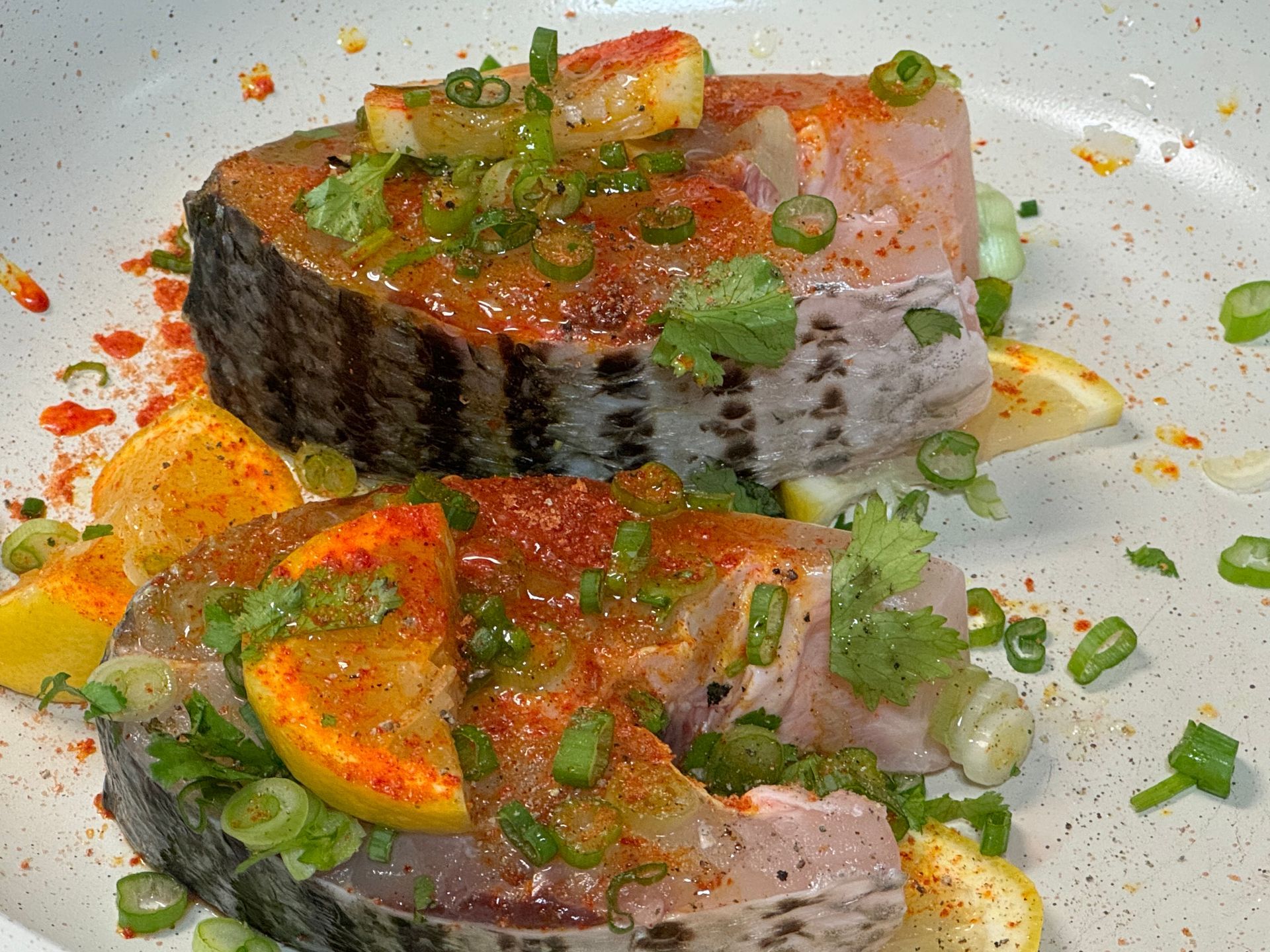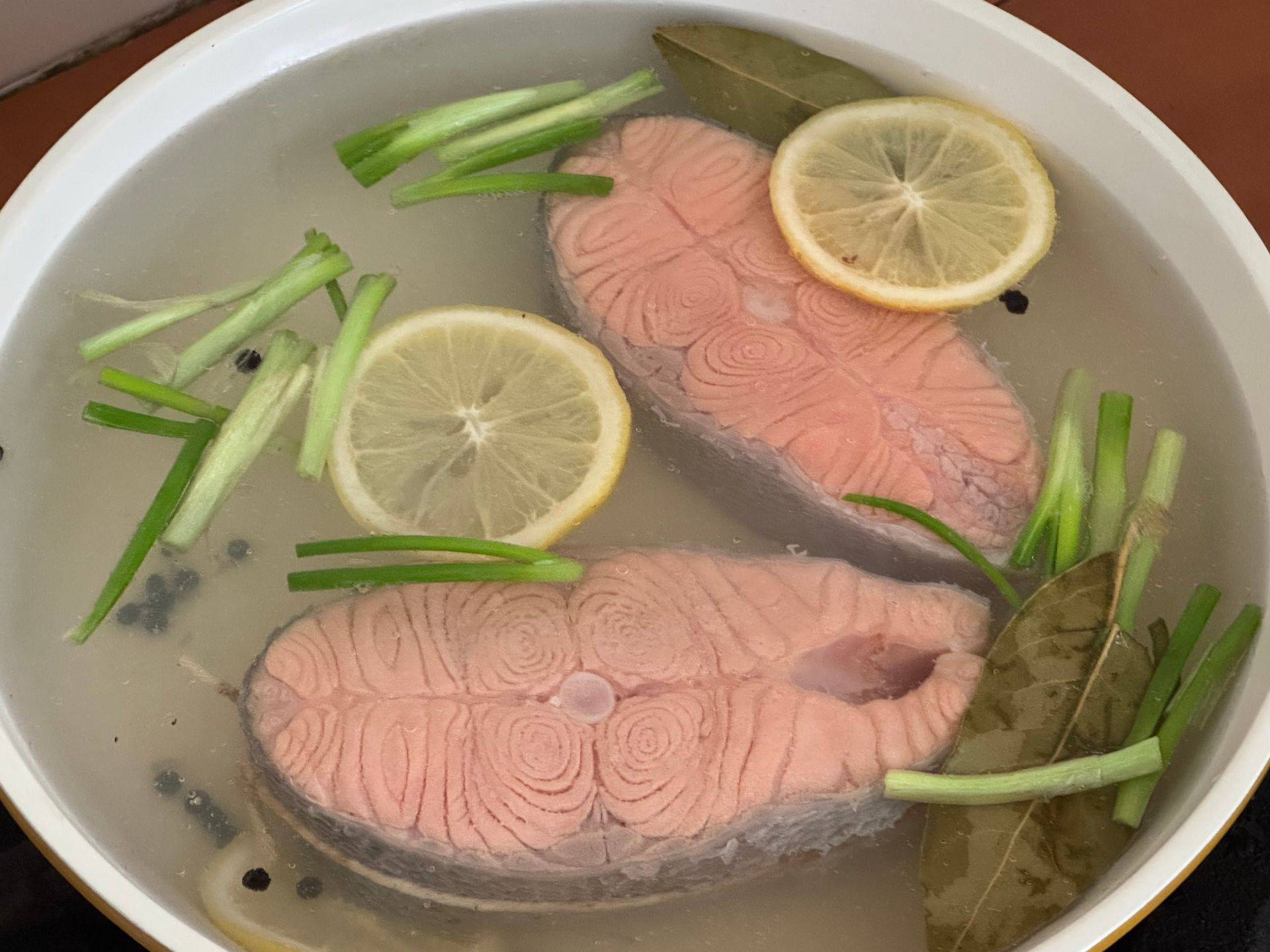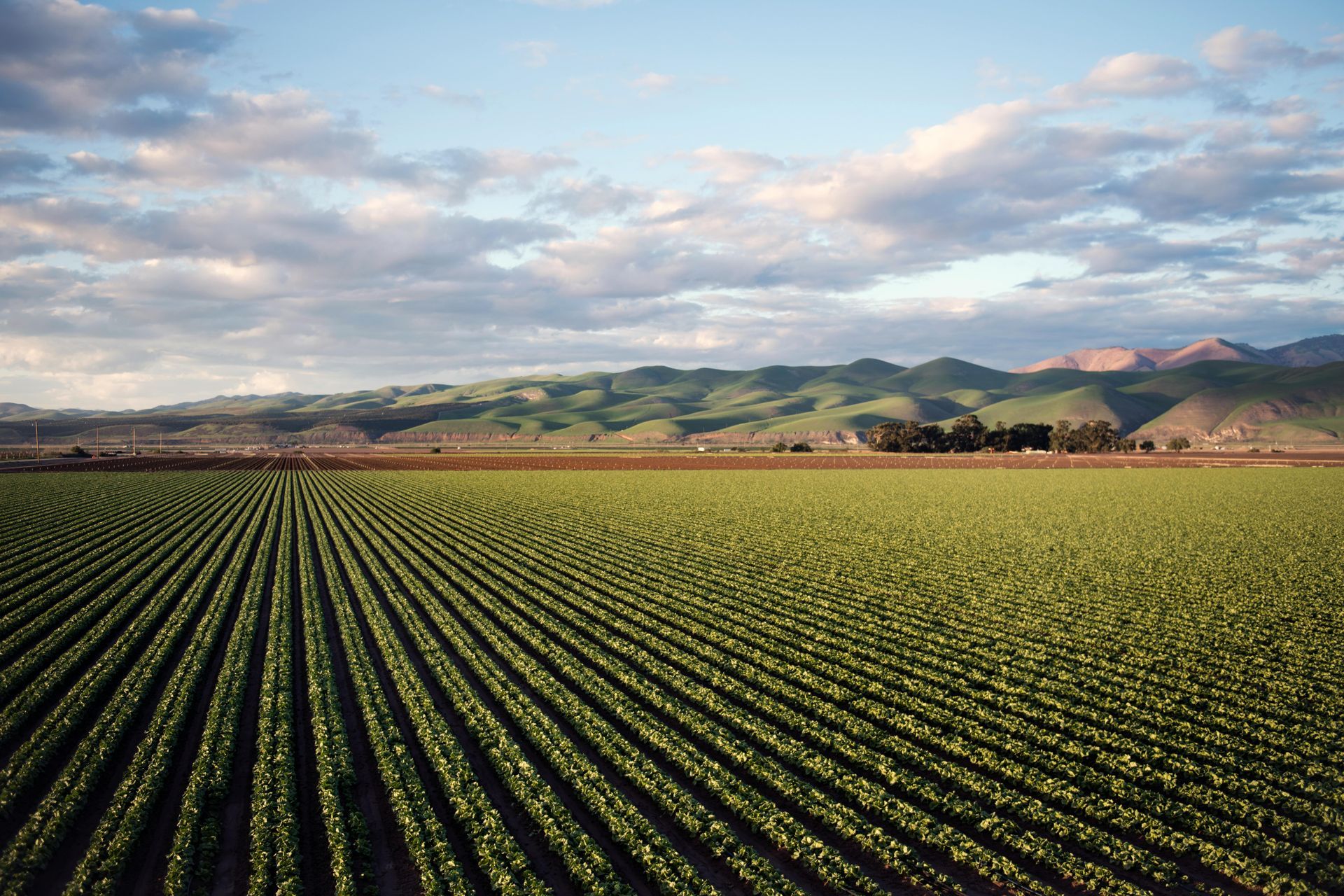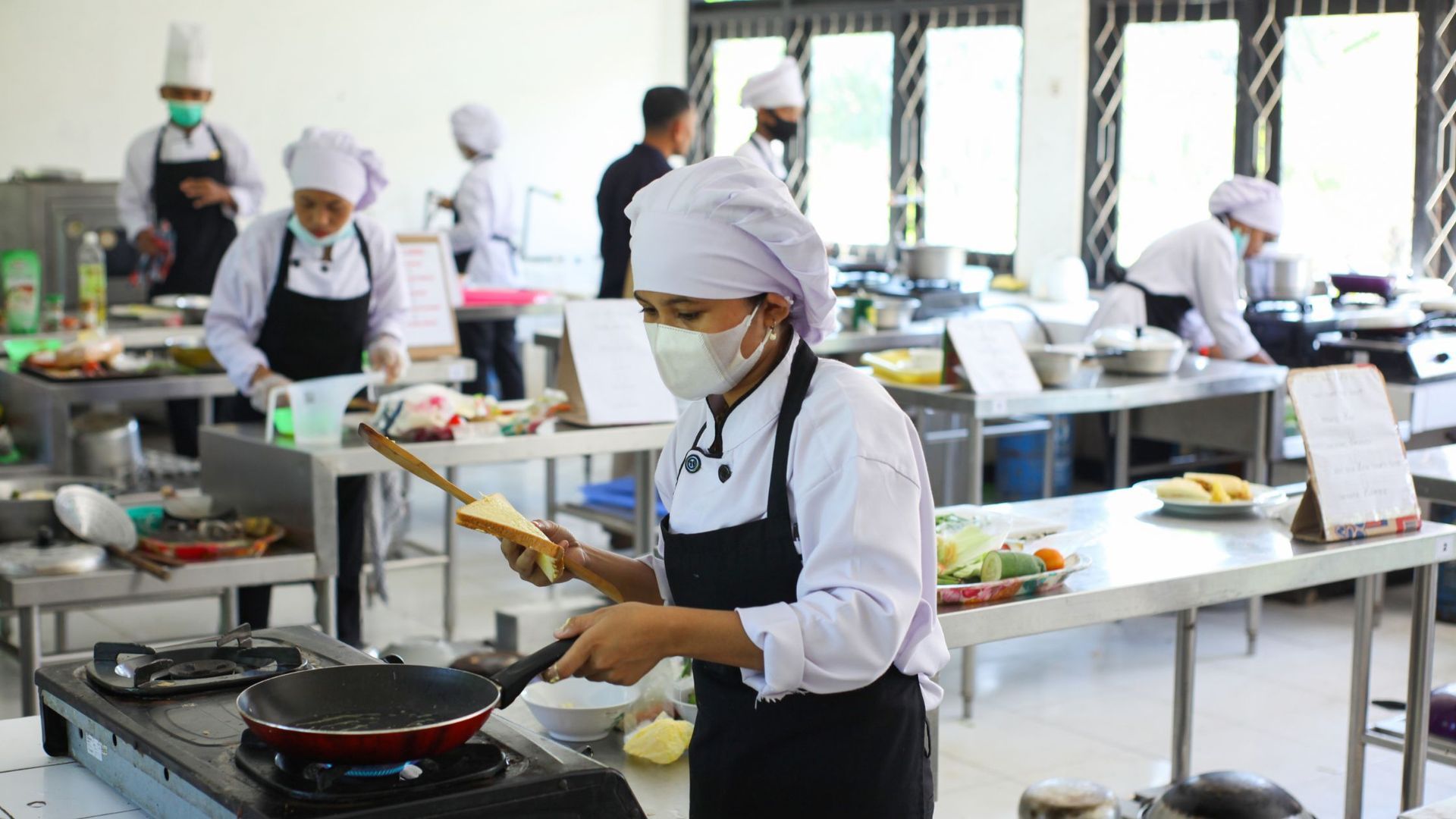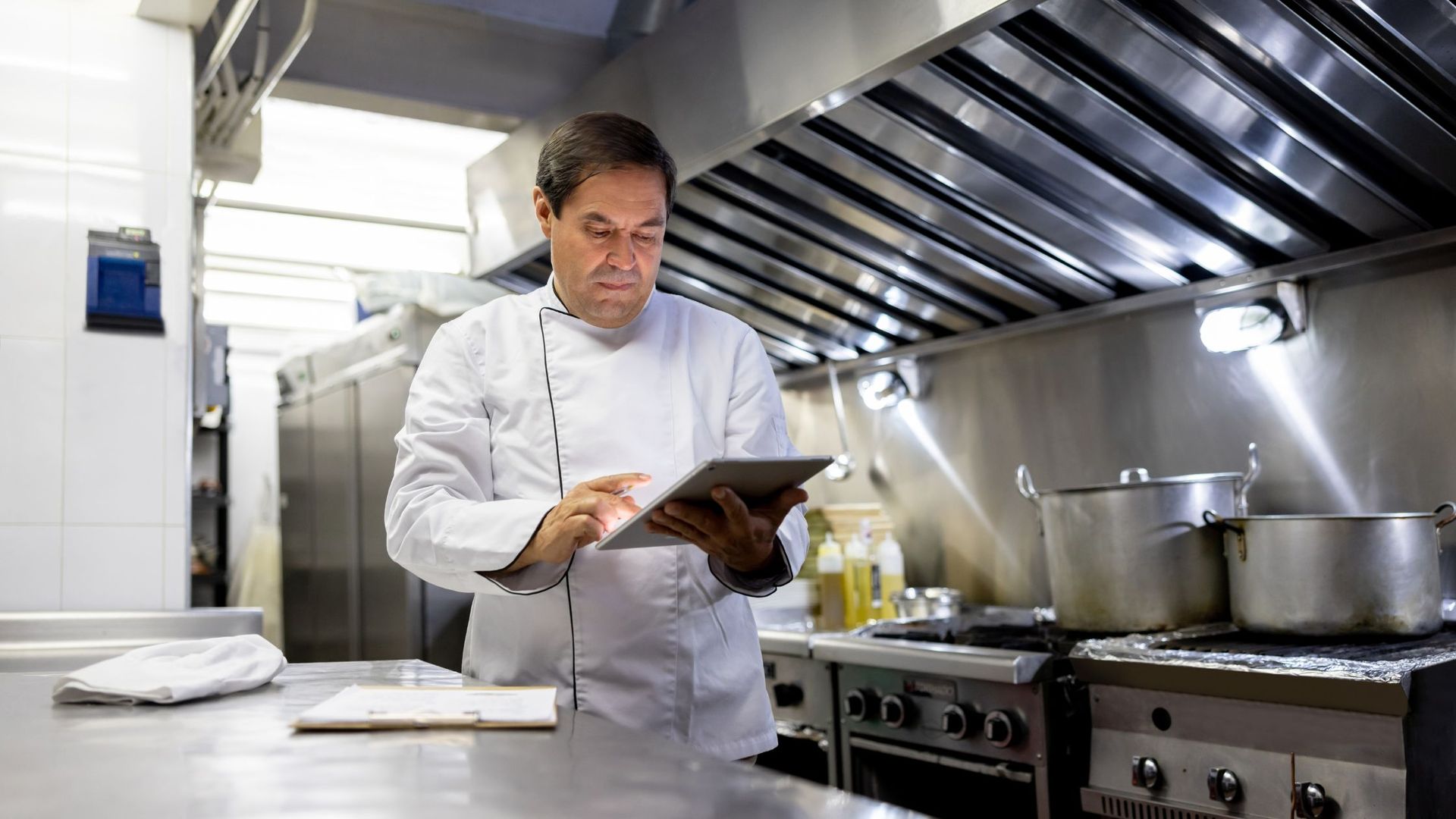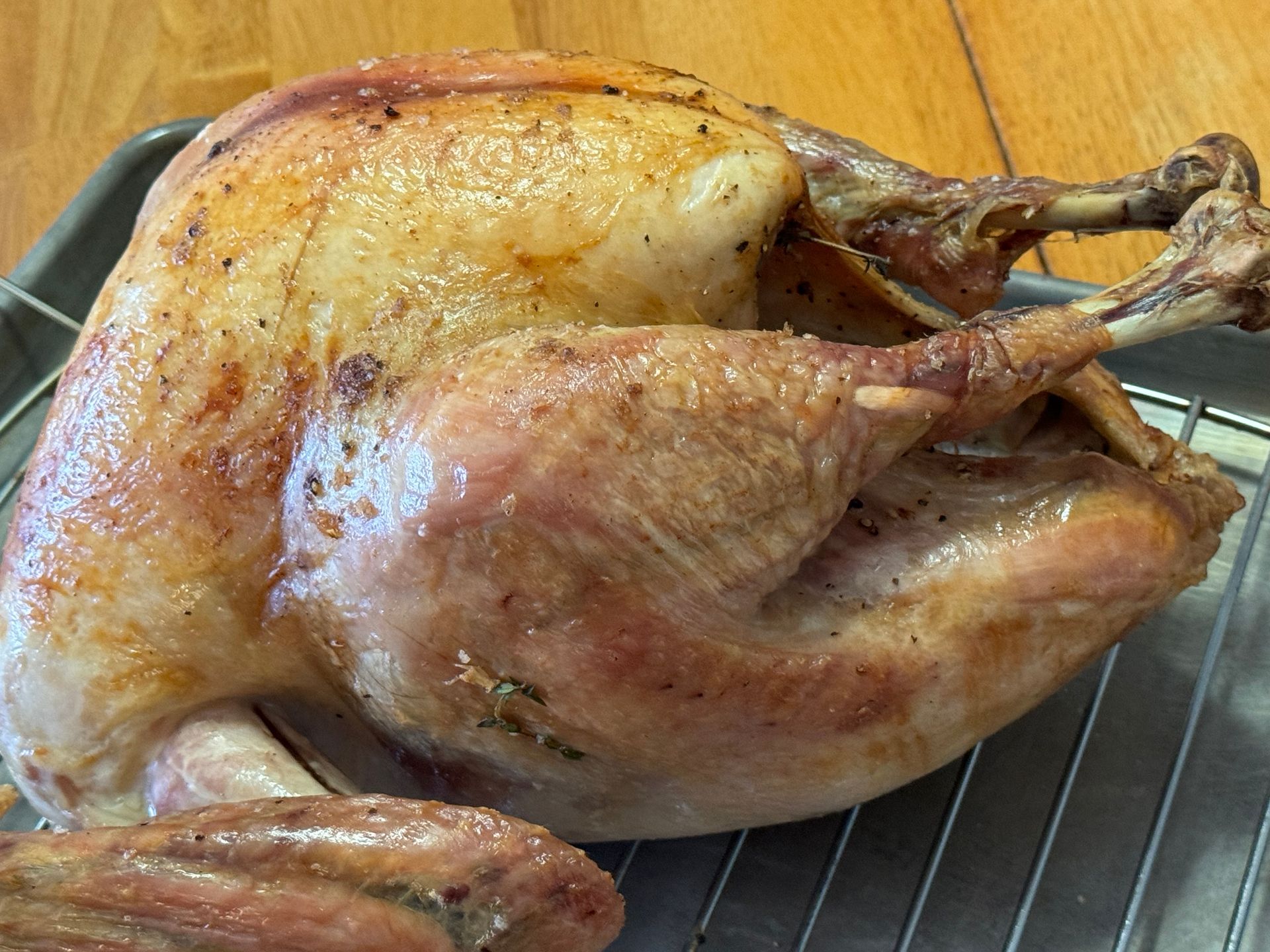
One of my favorite, roast turkey experiences was observing a Peruvian man marinate a whole turkey with about 2 cups of crushed garlic in olive oil. Years later I tried this recipe and found it to be exceptional!
Roasted Turkey
To brine or not to brine... I remember sitting at the breakfast table at the CIA, listening to the annual Thanksgiving discussion of the Chef's favorite heritage turkeys or their favorite brining ingredients. No one talked about spatchcock cooking in those days.
Prep Time: 3o min
Cooking Time: 2 hours to roast and rest
Ingredients
Yield: 10 portions
16-20 lbs. Fresh Turkey
1 Cup. Olive oil or butter
1 lb. Mirepoix (carrot, celery, onion)
Bay leaf, rosemary, thyme
Salt & Pepper
How to prepare Roasted Turkey
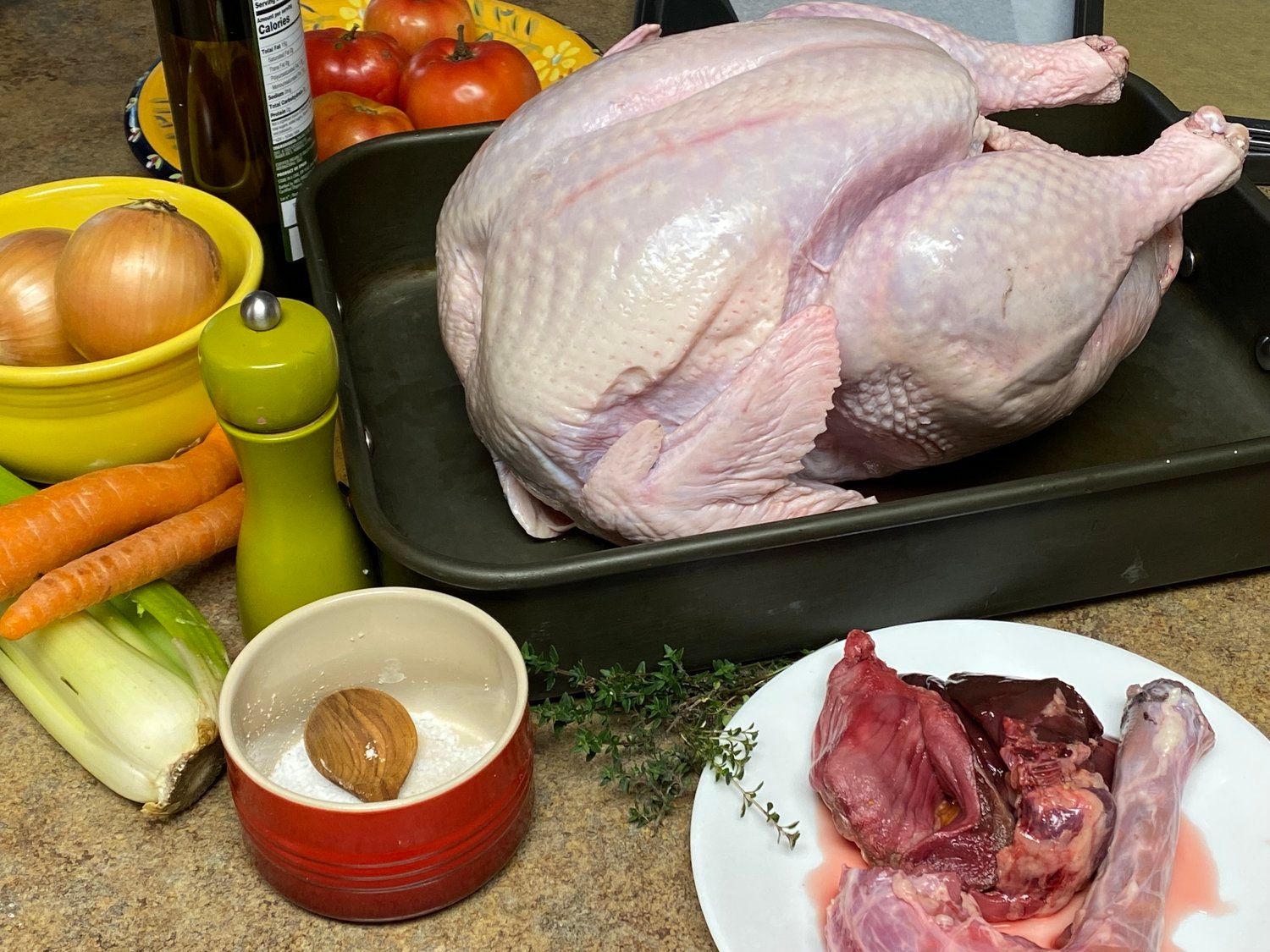

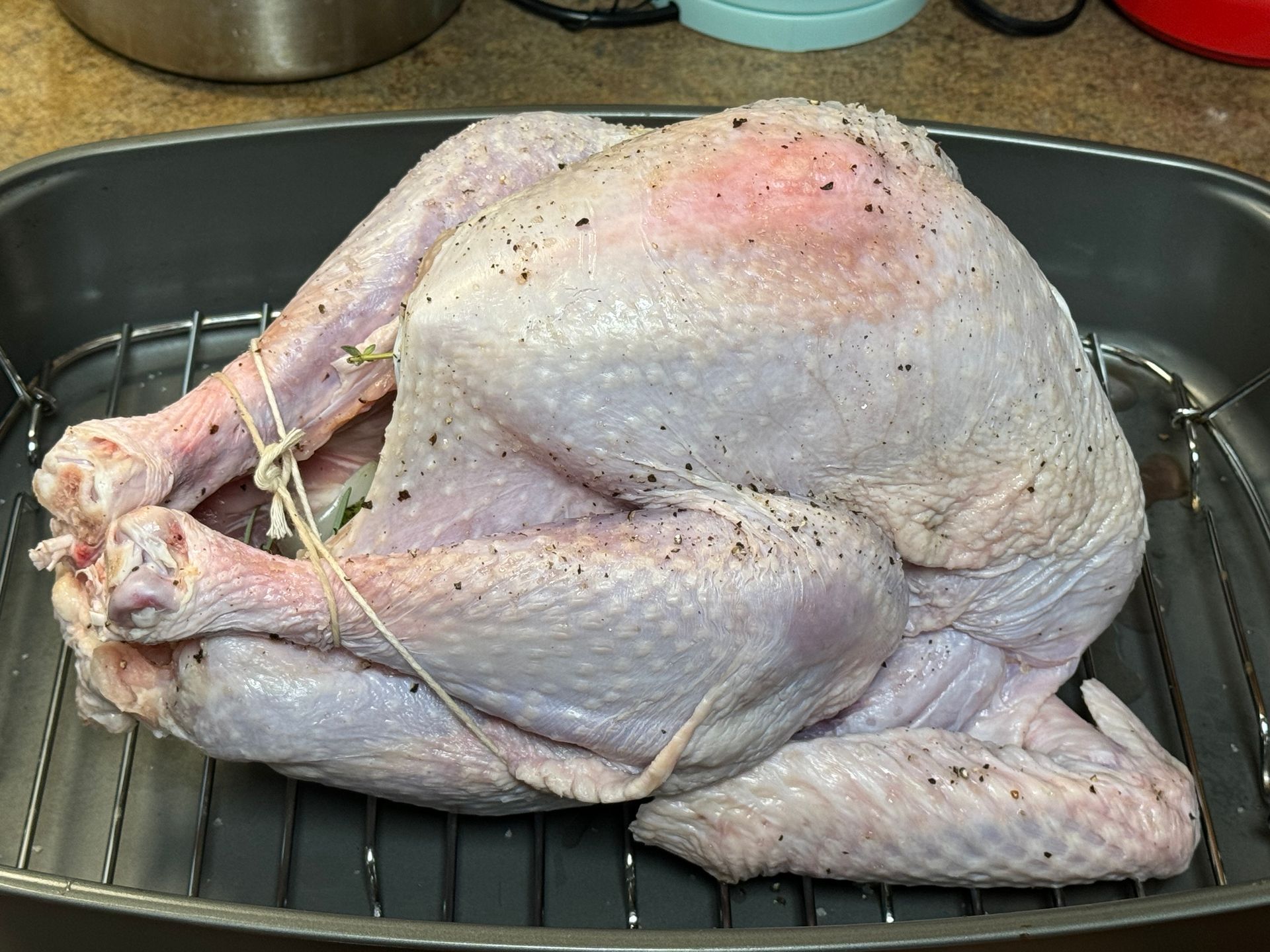

Step 1
Remove the giblets and neck from the cavity of the turkey. Place one bay leaf, 1 sprig of rosemary and 1 sprig of thyme into the cavity of the turkey. Season the turkey with kosher salt and melted butter/olive oil.
Step 2
Place the turkey onto a rack or a bed of mirepoix, place into a preheated oven at 400° F and bake for 30 minutes to create a beautiful, golden brown skin. Reduce the heat to 350° F and continue cooking until the turkey reaches an internal temperature of 165° F (using a thermometer, measure the temperature at the thigh)-juices should run clear.
you can baste the turkey throughout the cooking process-cover loosely with foil if the turkey is getting too brown.
Step 3
Let the turkey rest, while you prepare the gravy.

